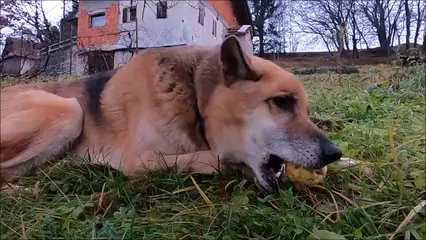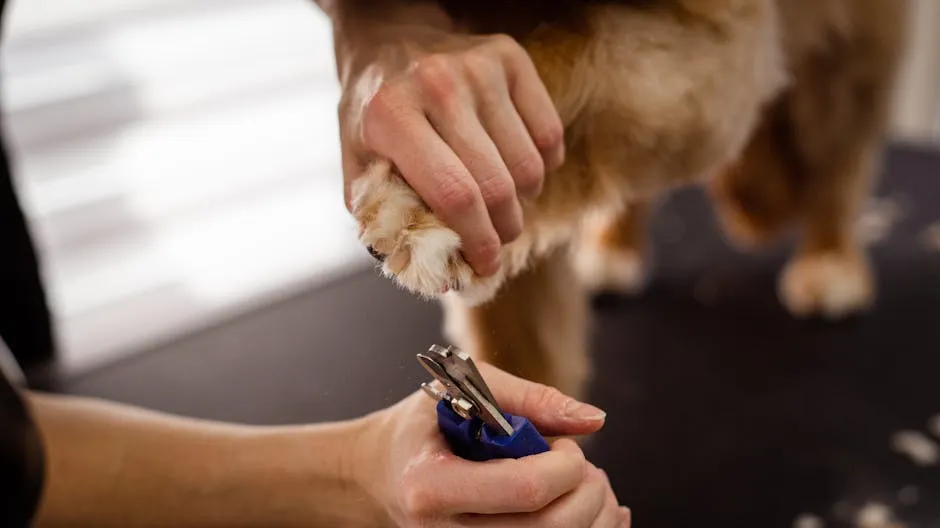Introduction
Curious if your dog can enjoy bell peppers? Many pet owners wonder which human foods are safe for their furry friends. Good news—bell peppers are generally safe for dogs! Not only do they provide a crunchy snack, but they also offer several health benefits. Let’s dive into why bell peppers can be a great addition to your dog’s diet.
And while you’re at it, why not keep those bell peppers fresh and organized? A set of food storage containers can help you keep your veggies and other treats fresh for longer! After all, no one wants to snack on wilted bell peppers, right?
Summary and Overview
Bell peppers are not just colorful; they boast impressive nutritional benefits for dogs. These vegetables are rich in vitamins A, C, and E, which support immune function and overall health. However, moderation is key! Always prepare them properly, ensuring seeds and stems are removed. Bell peppers come in various colors—red, yellow, orange, and green—each with different nutritional values. In the following sections, we’ll explore the safety of bell peppers, their nutritional value, and how to introduce them to your dog’s diet.
Speaking of safety, every pet owner should be prepared for emergencies. A pet first aid kit can be a lifesaver in case your pup gets into something they shouldn’t. Better safe than sorry, right?

Can Dogs Eat Bell Peppers?
Overview of Bell Peppers and Dog Safety
Yes, dogs can safely eat bell peppers! All colors—red, yellow, orange, and green—are non-toxic and safe for canine consumption. These colorful veggies are not only safe but also beneficial. They contain essential vitamins and antioxidants that support your dog’s health.
Before feeding bell peppers, ensure you remove the seeds and stems. These parts can be hard to digest and may cause discomfort. A veterinarian’s advice often highlights the importance of introducing new foods gradually to monitor for any adverse reactions. According to experts, starting with a small piece can help you gauge how your dog responds. If any signs of digestive upset occur, consult your vet for guidance.
Always remember, while bell peppers are healthy, they should complement a balanced diet. Treats should not exceed 10% of your dog’s daily calorie intake. So, feel free to share those bell peppers, but do so with care!
And while you’re sharing those tasty treats, consider a dog treat made with bell peppers. They’re a great way to reward your pup while keeping it healthy. Because who doesn’t love a good snack?

Nutritional Value of Bell Peppers
Bell peppers are not just colorful; they are packed with essential vitamins. They contain vitamins A, C, E, and B6, all crucial for your dog’s health. Vitamin A supports vision and immune function. Vitamin C acts as an antioxidant, helping to reduce inflammation and promote overall wellness. Vitamin E is vital for healthy skin and a shiny coat. Lastly, B6 aids in brain function and the production of red blood cells.
These vitamins work together to boost your dog’s immune system. Did you know that red bell peppers have the highest concentration of these nutrients? They contain up to nine times more beta-carotene than yellow or green varieties. This powerful antioxidant supports eye health and skin condition while helping combat free radicals in your dog’s body.
Incorporating bell peppers into your dog’s diet can enhance their nutrition, especially when combined with multivitamins for dogs in liquid for a well-rounded approach.
And if you’re looking for a way to keep your dog entertained, how about a dog puzzle toy? It’s a fantastic way to keep your pup’s mind sharp while they enjoy some yummy bell pepper snacks!

Types of Bell Peppers: Color Matters
When it comes to bell peppers, not all colors are created equal. Each variety—red, yellow, orange, and green—offers different nutritional benefits. Red bell peppers are the most nutritious, boasting higher levels of vitamins and antioxidants compared to their green counterparts. For instance, red peppers can contain up to 11 times more beta-carotene than green ones.
Yellow and orange peppers also provide valuable nutrients but fall short in comparison to red ones. Green peppers, while safe, contain fewer vitamins and antioxidants. If you want to maximize health benefits for your dog, choose red bell peppers whenever possible.
By focusing on the color, you can ensure your dog receives the best nutritional punch. So, the next time you shop, reach for those vibrant red bell peppers for maximum benefits!

And while you’re at it, why not make your meal prep easier with a vegetable chopper? It’s perfect for prepping those bell peppers and other veggies for both you and your furry friend!

How to Introduce Bell Peppers to Your Dog’s Diet
Guidelines for Safe Feeding
Introducing bell peppers to your dog’s diet can be a healthy venture. However, it’s crucial to do it safely. Start with small portions, especially if your dog is small. For small breeds, offer no more than one-quarter of a pepper. Larger dogs can enjoy up to half a pepper. This helps avoid digestive upset.
Begin by offering a tiny piece and observe how your dog reacts. Gradual introduction is essential. If your dog shows no signs of discomfort, you can slowly increase the portion. Remember, treats should only make up about 10% of your dog’s daily calorie intake.
Always monitor your dog after introducing new foods. Keep an eye out for any unusual behaviors or digestive issues. A helpful tip is to keep a diary of all new foods. This way, you can track any reactions and adjust accordingly. Each dog is unique, so proceed with caution and care.

Also, consider using a dog training clicker to reward them when they try new foods. Positive reinforcement can make all the difference!

Preparation Tips for Feeding Bell Peppers
Safe and Dog-Friendly Preparation Methods
When it comes to preparing bell peppers for your dog, simplicity is key. You can offer them raw, cooked, or steamed. Raw bell peppers retain the most nutrients, but some dogs prefer softer textures. If your dog struggles with the tough outer skin, steaming can help.
Avoid adding any seasonings, as these can be harmful. Ingredients like onions and garlic are toxic to dogs. Always remove seeds and stems before serving, as these parts can be hard to digest.
Interestingly, studies suggest that cooked vegetables can be easier for dogs to digest than raw ones. If your dog enjoys pureed foods, blending bell peppers can be a great option. Experiment with different preparation methods to discover what your dog likes best!

And while you’re experimenting, consider investing in a pet grooming brush. Keeping your dog’s coat healthy can enhance their overall well-being, especially when introducing new foods!

Potential Risks and Considerations
Understanding the Downsides of Feeding Bell Peppers
While bell peppers are generally safe, there are some risks to consider. Overconsumption can lead to digestive upset in dogs. Symptoms may include vomiting, diarrhea, and stomach discomfort. It’s essential to monitor your dog for these signs, especially when introducing new foods.
Be cautious with spicy peppers. Varieties like jalapeños contain capsaicin, which can irritate your dog’s mouth and stomach. If your dog accidentally eats a spicy pepper, watch for signs like excessive drooling, retching, or discomfort. If severe symptoms occur, contact your veterinarian immediately.
Always remove seeds and stems before serving bell peppers. These parts can be hard to digest and may cause gastrointestinal issues. Keeping emergency vet contact information handy is a smart move. If you notice anything unusual after your dog eats bell peppers, don’t hesitate to reach out for professional advice. Remember, moderation and caution are key when adding new foods to your dog’s diet!

Speaking of emergency preparedness, have you thought about a dog car seat cover? It can protect your vehicle while keeping your furry friend safe during travels!

Conclusion
In summary, bell peppers can be a healthy treat for your dog. They offer essential vitamins and antioxidants that contribute to overall well-being. However, it’s crucial to serve them in moderation and prepare them properly. Always remove seeds and stems to prevent digestive issues. If you’re unsure, consult your veterinarian for personalized advice. Happy snacking with your furry friend!
FAQs
Common Questions About Dogs and Bell Peppers
Are bell peppers toxic to dogs?
No, bell peppers are safe and non-toxic for dogs. All colors—red, yellow, orange, and green—can be enjoyed. They provide essential nutrients without harmful effects. Just remember to remove seeds and stems before serving.
What color bell pepper is healthiest for dogs?
Red bell peppers are the healthiest choice for dogs. They are packed with vitamins A, C, and E. These nutrients support immune health and promote a shiny coat. Red peppers also contain more antioxidants than other colors.
Can dogs eat spicy peppers?
It’s best to avoid spicy peppers like jalapeños. These can irritate your dog’s mouth and stomach. Symptoms may include excessive drooling or vomiting. If your dog accidentally eats one, monitor them closely for discomfort.
How should I prepare bell peppers for my dog?
You can serve bell peppers raw, cooked, or steamed. Always wash them thoroughly and cut into small, manageable pieces. Avoid adding any seasonings or oils, as these can be harmful. Removing the seeds and stems is crucial for safe feeding.
How much bell pepper can my dog eat?
Portion sizes depend on your dog’s size. Small dogs can enjoy a few slices, while larger dogs may have half a pepper. Treats should only make up about 10% of their daily calories. Always start small and observe for any adverse reactions.
Please let us know what you think about our content by leaving a comment down below!
Thank you for reading till here 🙂
All images from Pexels





